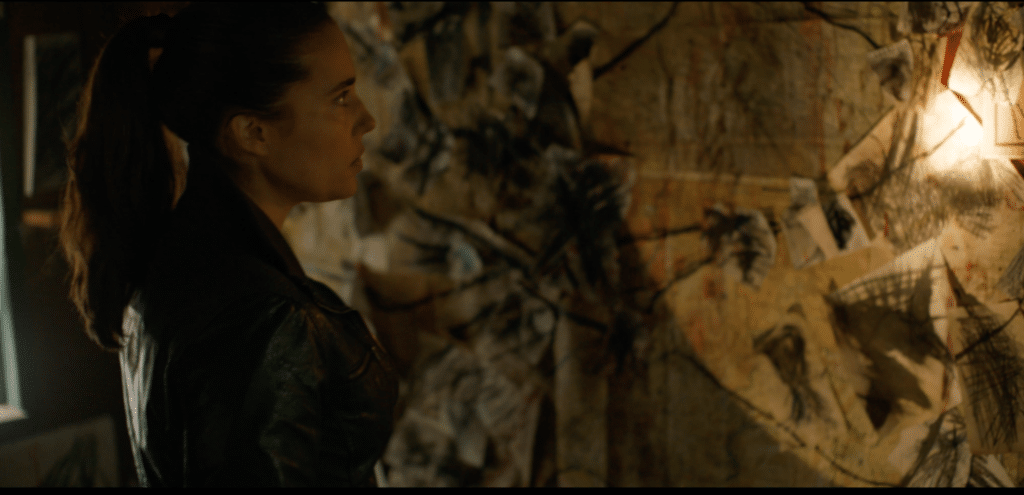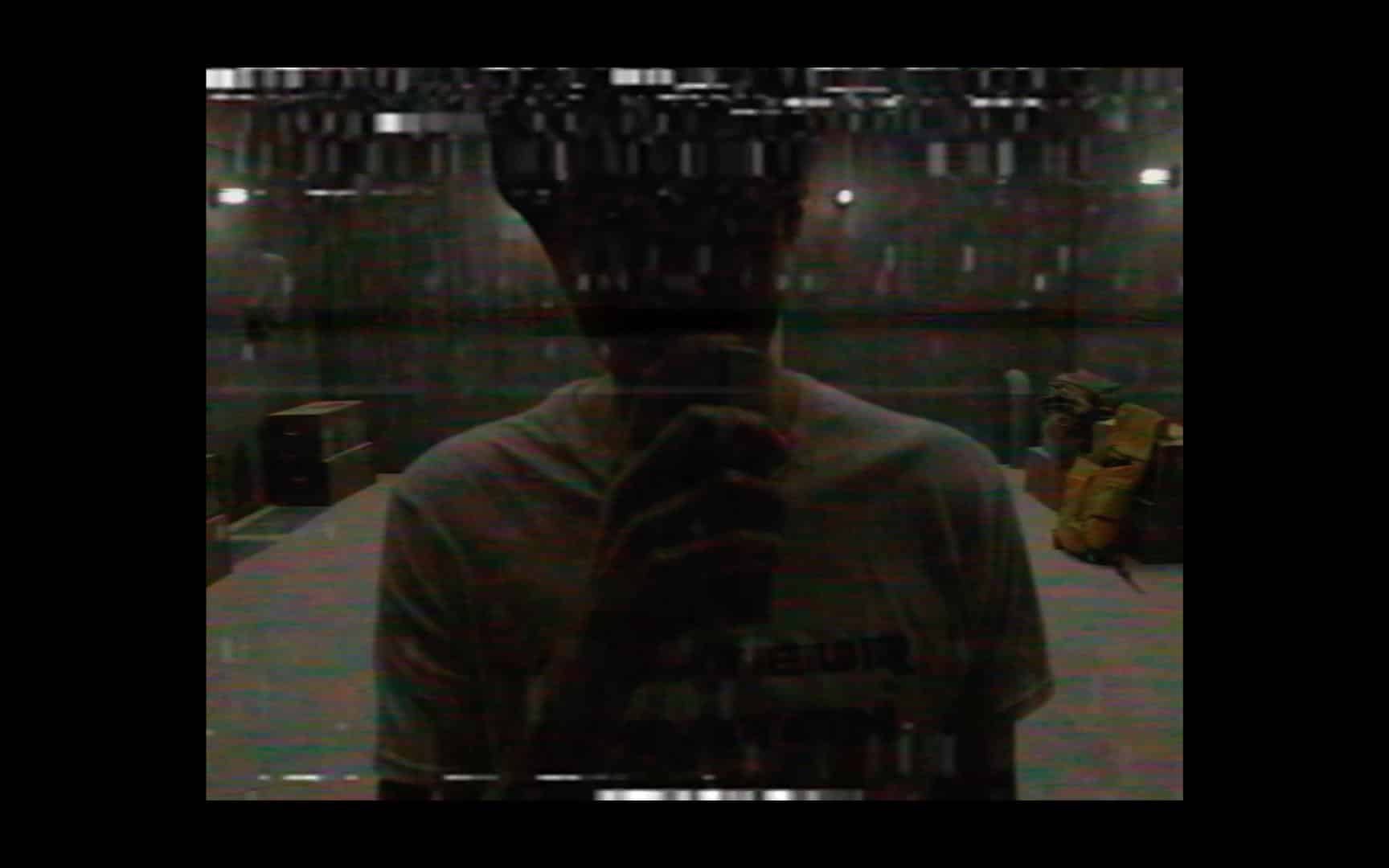
Do you like surprises? I tend not to, but when Do Not Watch rolled through with no plot synopsis, no character listings, and no hints, I was curious to say the least. With a vague and vacant IMDb page that left this reviewer scrambling for the credits, this film – directed by Justin Janowitz and written by Ryan Toyama – is steeped in mystery from its opening moments to its closing cries. I’m here now to report back all that I could glean from my screening. Opening with testimonials that what we are about to witness are the events surrounding the disappearance of a production crew during their work on research footage from the 1980s, the film is supposedly presented in its original, unaltered form, and the cause of the unknown Editor’s “growing madness” and strange cautionary messages are still being studied. A hard drive was found in the midst of arson wreckage and contained only a single file titled “Do Not Watch.” We cut to a young woman, The Director (Alix Angelis of Imaginary and The Cleansing Hour) doing introductions, preparing an “ambush” approach to this story. They are outside the house of Abraham Lorentz (Garth Wynne-Jones), a former production company owner and producer of an ill-fated series that led to the disappearance of six people and all of their footage. The owner comes out agitatedly asking if the two crewmen are the ones who have been harassing him, to which they reply they only want answers about one fateful night back when he was running production. He tells them there’s nothing left and if they have sense, they’ll stop looking.
We cut to a young man, Casey (Ezekiel Ajeigbe), on his first day at the job editing a feature called “The Bunker Anomaly” at Illusion Post. He introduces us to his assistant editor Falco (Brendan McCay) in a video made for his family, as he takes a tour around the office introducing various staff members. We finally arrive in a meeting with everyone and Abraham (still in charge at the time) as they introduce a new low risk, high reward project. The crew debates the merits of the project, which is supposedly disturbing, and potentially fabricated. The film cuts suddenly to a 1980s style production with a man, Faraday (Greg Scali), and a woman filming each other as they discuss scientific pursuits, when an older man arrives to bring the pair diary pages from a researcher long back who made a discovery that supposedly “altered his very consciousness.” The group is trying to find phenomena in the woods, measuring with a compass and following the guidance of the older man who sees the compass pointing away from north just as the group feels they are lost. They come upon a locked hatch in the ground which seems to appear from nowhere, leading down to a bunker. A screeching sound shocks the group, but despite it, they head deeper into the darkness, their EMF reader going crazy as they enter a new room with a large, locked door.
The film takes us back to Illusion Post, where we see papers and monitors destroyed across the office. Casey describes it as an “incident” as we cut to a man bleeding and crying that “Robin has gone crazy,” with screaming in the background. The man warns whatever you do, do not watch the footage, delete it, burn it, whatever you have to do, and Casey wonders what this is turning into as he sorts through the wreckage. As they browse through Robin’s notebook they see her mental state was devolving, her notes turning to crazed scratchings, and they wonder where the tapes came from.
It cuts to The Director and a Mr. Squires (Adetokumboh M’Cormack), a former Park Ranger that found the tapes. He said he knew they were bad, that he found them on the ground at a campsite. He says when they were taken back to the station and viewed, all he could describe was madness. Cutting back to the bunker, we see that the area is having an effect on the group: one of them is getting panicked and beginning to scribble. The old man laughs and says the EMF can cause paranoia and suggests they get some air, but instead, they remain, continuing to observe. They are now nowhere and everywhere, the old man insists.
The style of this film is incredibly distinctive, with stories buried within stories, films inside of films all leading down a mysterious trail of destruction and disappearance. At first, I was disarmed by the skipping timeline as stories from decades ago or other recovered footage from other cameras like cell phones appeared within the story from the present, and felt almost like I was getting pulled along. Eventually, the stories hit their stride after the first act lets them unfold, and the timelines seem to unfurl in unison, hurtling us towards the truth. The style of film is complemented by the editing and imagery used, delivering messages over scenes from “The Editor” referenced in the beginning of the film such as “Look Away” flashing only for a moment, inserting disturbing moments of violence or unease for mere moments between cuts, and creating an atmosphere of paranoia in every story told. This was the first film in some time that gave me a genuine fright, and the scares come in different flavors from the unnerving, to the outright disturbing, to the quick and simple jumpers that keep you on your toes. This was the first purely horror story I feel I’ve watched in a while, and I was grateful to watch something curated to make audiences nervous.
Led by the wide eyed, intense performance of Alix Angeles, all actors show up ready to play. Every performer from every portion of the story is all around convincing, from the stable interviewers poised in front of the camera, to the crumbling faces staring into monitors, consumed by the tapes. Each player puts on a fantastic show, sometimes unsettling, sometimes shocking in nature as people are pushed to their limits. The found footage lens sticks throughout with the moving, shaking cameras, and candid angles. This reminded me a little of the smash hit anthology series V/H/S with its cursed tapes and layered stories as these tapes carry us through different times and stories as well, all linking to this destructive footage. Lighting and editing are phenomenal with the additional overlays of text, use of testimonials, changing color palette, or clarity of the camera creating different worlds and different views to explore. When one story ends its run, you are immediately drawn into the next as the feeling and visuals shift and things get progressively more explosive. Without giving away any more story, all I can say is: embrace the unique stylings of this film, as this is one of the more interesting found footage pieces I’ve seen recently. If you have the chance to view, please ignore the title warning and keep your eyes wide open for Do Not Watch, and enjoy the plummeting rabbit hole of found footage fear.
